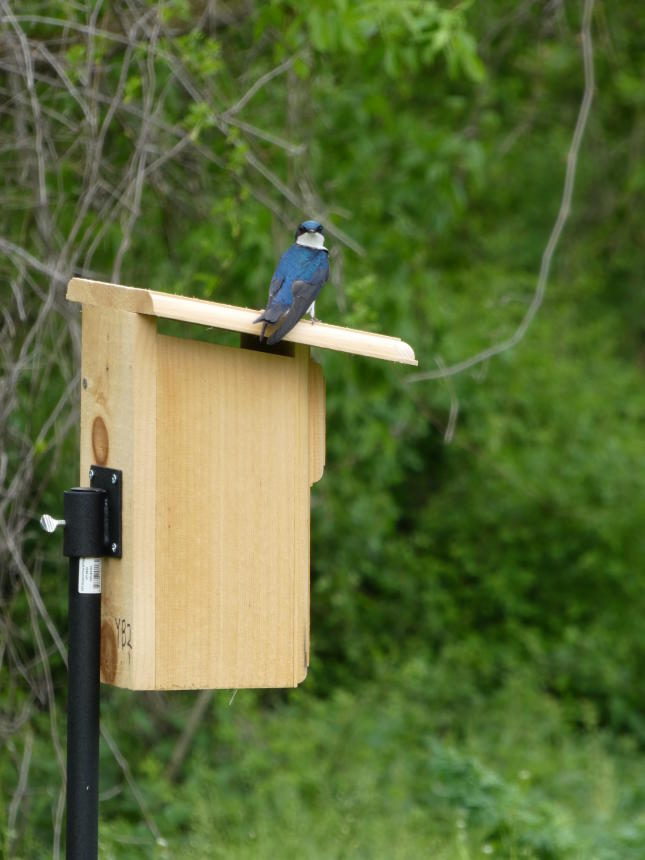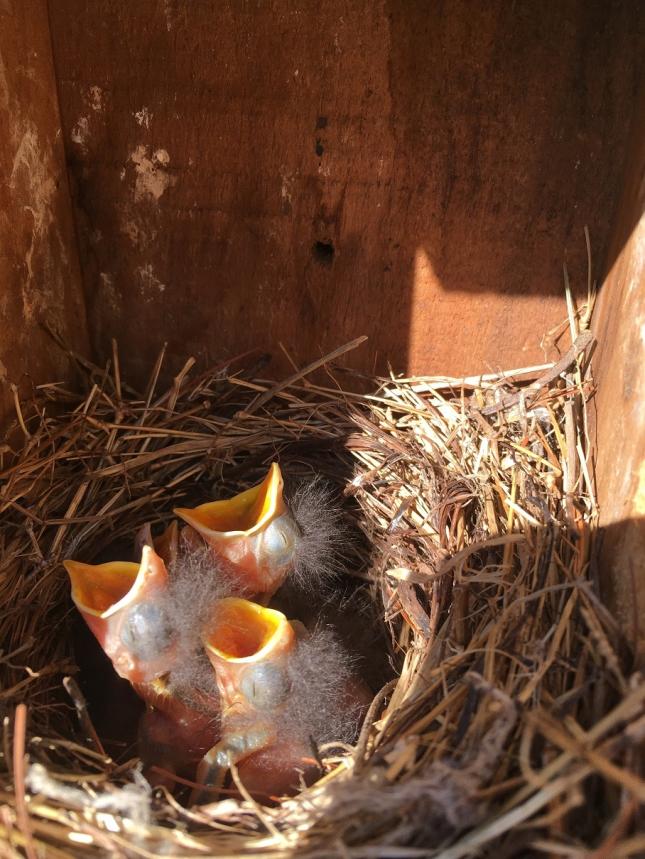All About Nesting
March to July is an exciting time for bird lovers in our region; it's nesting season! From courtship behaviors to eggs hatching to fledgling babies learning how to navigate the world, there's lots of awesome bird behavior to be seen during this time. One of the best ways to get a front row seat to all the action is to put up a birdhouse. While not all birds will use a house, several of our backyard species readily do. This gives us the opportunity to experience all these cool nesting behaviors up close. With that being said, let's talk about birdhouses!

Who Will Use a Birdhouse?
A birdhouse is a man made substitute for a natural cavity in a tree. Natural cavities are either formed naturally as the tree grew or a Woodpecker excavated the hole for nesting. Therefore, birds that are typically cavity nesters will be the ones you are looking to attract with a birdhouse. There are two kinds of cavity nesters: primary and secondary. Primary cavity nesters are your woodpeckers, who will actively create a new hole in a tree to nest in. Secondary cavity nesters are species that prefer to nest in a tree cavity but can not create their own holes. Most of your nest box tenants will be secondary cavity nesting species, however you can occasionally get a woodpecker to nest in a birdhouse as well.
Species that you most often see using a birdhouse include:
- House Wrens
- Chickadees
- Bluebirds
- Tree Swallows
- House Sparrows will use a nest box too. They are an invasive species and should be discouraged from nesting.
Species that are less frequently seen in a birdhouse, but may still use one include:
- Titmice
- Nuthatches
- Smaller Woodpeckers
Species that need a certain size nest box and a larger habitat than a suburban backyard include:
- Wood Ducks
- Flycatchers
- Screech Owls
- Purple Martins
Choosing the Best Birdhouse for Your Yard
The size of the entrance hole will determine who can and can't use a birdhouse. Most houses that we carry have entrances that are either 1 1/8 inch or 1 1/2 inch in diameter. Wrens and Chickadees can fit into the 1 1/8 inch diameter houses. If you want to attract Bluebirds or Tree Swallows however, you will need a house with a 1 1/2 inch diameter hole. Nuthatches and Titmice will also use the 1 1/2 inch hole house.
Species such as Woodpeckers, Wood Ducks, Screech Owls, Flycatchers, and Purple Martins require more specialized housing. You can ask an associate about these houses and if they would be appropriate for your yard.
What to Do About House Sparrows
House Sparrows are an invasive species from Europe that will readily nest in a birdhouse. They can be rather aggressive and will compete for house space with your other birds. Deterring these troublesome birds from nesting in your yard and houses can be a challenge. One way is to put up houses that they can't fit into. Nest boxes with a 1 1/8 inch diameter hole are too small for House Sparrows to fit into, so they will not be able to occupy them. If you are trying to get Bluebirds or Tree Swallows however, you will need the larger diameter hole that the Sparrows can also fit into. If this is the case, the best you can do is remove the House Sparrow nest from the birdhouse when they are building it and hope that your Bluebirds or Swallows will swoop in and occupy the house before the Sparrows can rebuild.
Have More Questions About Nesting?
Stop in and ask any of our expert associates about setting up a birdhouse in your yard! We are happy to answer any questions you may have.


